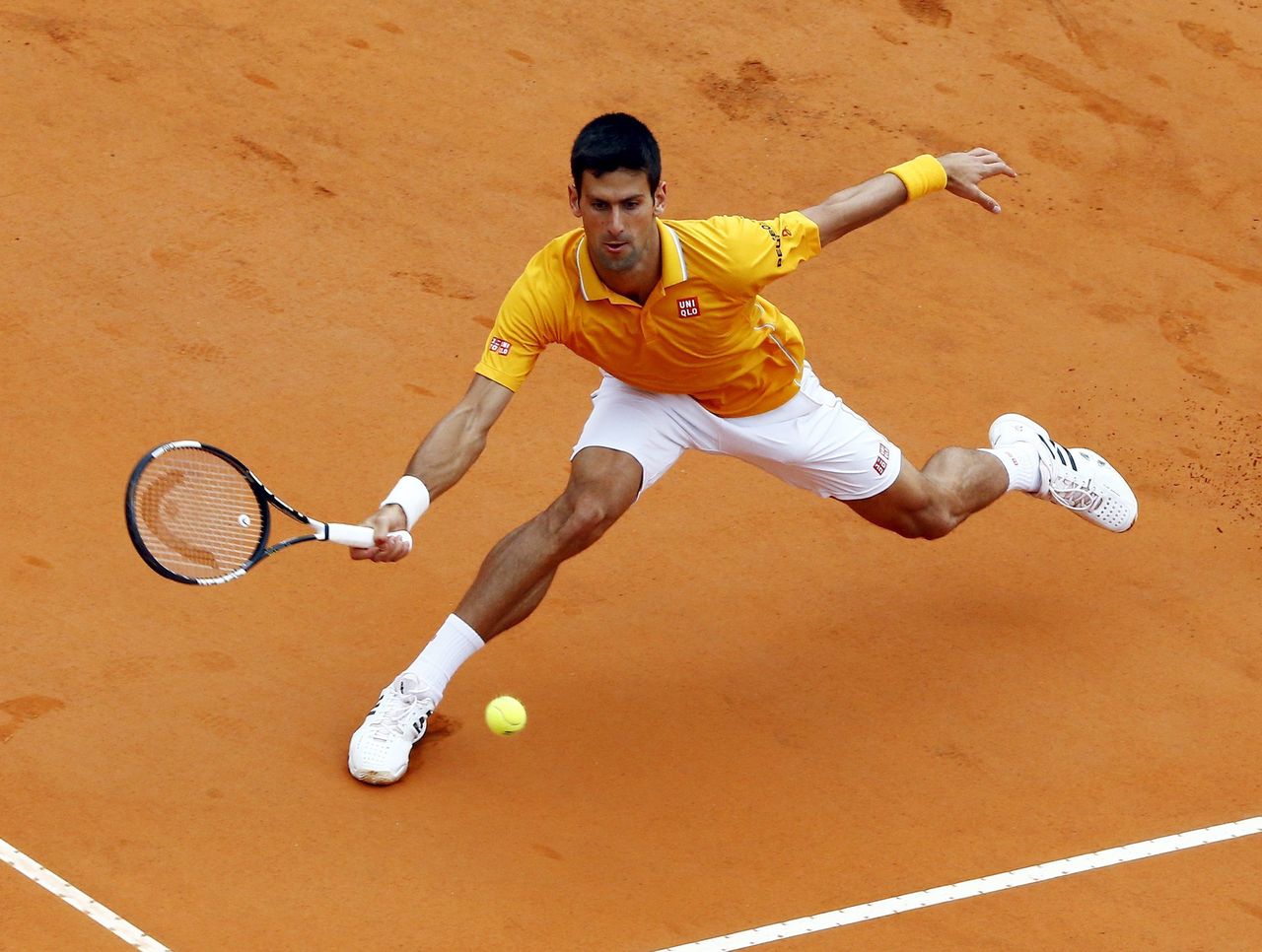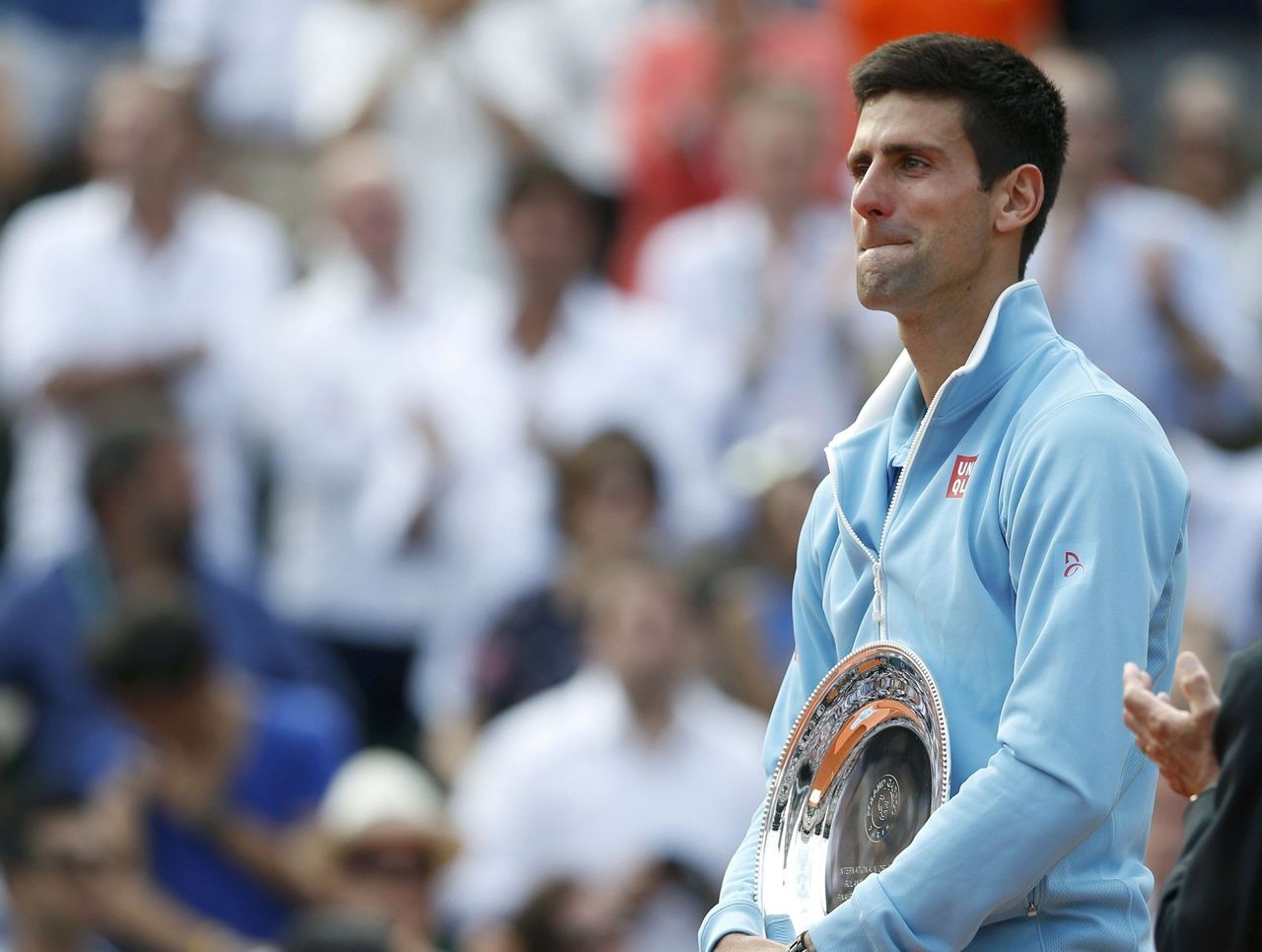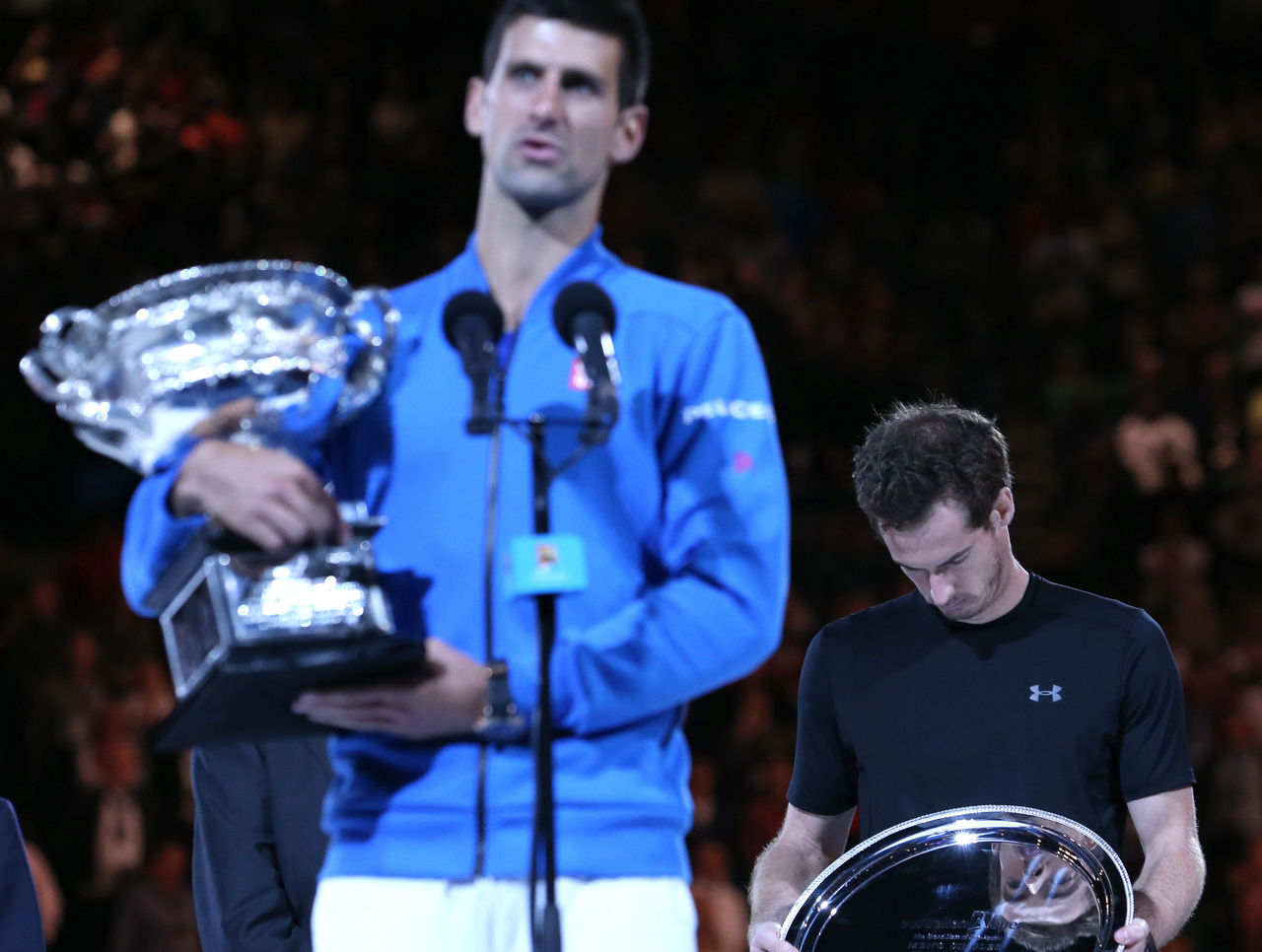The Big 1: Novak Djokovic looks to put a jewel in his crown at Roland Garros
There was a moment this season when it looked like Novak Djokovic’s historic run of dominance would be interrupted.
It was the fourth round of the Miami Masters, and 65th-ranked Alexandr Dolgopolov - a gawky, unorthodox, mechanical iconoclast - was up 7-6, 3-0 on Djokovic by playing his rhythm-busting, herky-jerky game to perfection; hacking slice after heavy slice, painting the lines with contorting jump shots, and keeping Djokovic off balance with his twitchy service delivery.
The issue for Dolgopolov - as for anyone who’s had notions of beating Djokovic this year - was trying to find something to throw at him once the kitchen sink had been uprooted. If there’s a blueprint for beating Djokovic, beyond hoping like hell he has an uncharacteristically error-prone day, it’s to go for broke at every turn and continually turn up a winner - not what you’d call a sustainable strategy.
Dolgopolov managed it for a set and a half. He had two chances to break and go up 4-0 in the second. He couldn’t. Djokovic held for 3-1, and that was all the daylight he needed. As soon as Dolgopolov’s belief began to flag, Djokovic pounced, coming back to win the set with relative ease. The third was over in 13 minutes.
It’s become a pattern. Djokovic has won 10 straight deciding sets; three have been bagels, two have finished 6-1, and only one has seen him drop more than three games. He saves his most diabolical tennis for those times when the faint possibility of defeat snaps into focus.
King of Clay ... and every other surface
Djokovic's dominance isn’t the sort that announces itself immediately, but rather reveals itself over the course of an entire match. He rarely comes out playing the aggressor. He waits, picks his spots, makes you think, makes you doubt yourself. It’s wear-you-out, drag-you-through-the-muck outlastmanship, and it works even on his off days. His B-game can be every bit as effective as anyone else’s A-game, his own included.
This season has been a perfect case in point. Djokovic’s offense hasn’t always been in top form (sometimes far from it), but defensively he’s been at his elastic best, sliding fluidly into split-legged backhands, whacking vicious crosscourt forehands on the run, lunging, stretching, somehow bending to dig balls out of the corners. Nor does he simply retrieve balls he has no business getting to; he manages to get on top of them, flick them back - with power - to tricky spots that set his opponent scampering in turn. He lands counterpunches that would make Floyd Mayweather blush.

That's not so different from what's made Rafael Nadal a clay-court hegemon for the past decade, and when the two met in a physically punishing French Open final last year, it was Nadal who dug deeper, defended better; it was Djokovic who ran out of answers.
A lot has changed since then. Nadal hasn’t looked the same since a wrist injury and appendix surgery knocked him out of the back half of last season. He and Djokovic didn’t play again until the semis of this spring’s Monte Carlo Masters, and stamina didn’t even enter the picture in that match. Nadal looked comparatively lead-footed, and was bullied behind the baseline, scarcely able to put a nick on Djokovic’s armor. He lost in two shockingly routine sets.
Djokovic has long been the world’s second-best dirtballer, but he's arguably surpassed Nadal and claimed the unofficial crown. On top of the fact he’s won every match on the crushed red brick this season, the reality is that right now, nobody in the world can move on a tennis court - of any surface - the way Djokovic can.
His movement can look like a physical contradiction. With his preternaturally erect posture, his compact and linear strokes, the precision of his routes to the ball, at first glance he’s the most rigidly upright player on the planet. At second, he’s the most limber. His sneaky flexibility has a way of creeping up on you, settling on the brain, slowly making you forget what you’re watching is a human body at work.
Because seeing Djokovic's body move like that seems to undermine its very structural integrity. It reminds of the way tall buildings - even the sturdiest of them - are designed to sway back and forth, like palm trees, in the wind. The function is perfectly rational; the form boggles the mind. These are marvels of modern science.
Unfinished business

The world No. 1 (for 46 straight weeks and counting) has steamrolled his way into the season's second Grand Slam on one of the greatest runs the sport has ever seen. He’s won seven straight premier events he’s appeared in, from last year’s Paris Masters and Tour Finals to this year’s Australian Open and the Masters in Indian Wells, Miami, Monte Carlo, and Rome. He’s 35-2 in 2015, and has opened up a tour-record 5,610-point lead over world No. 2, Roger Federer. There is no Big Four. There’s Novak, then there’s a great big ocean, and then there’s everybody else.
He’d surely trade it all in for a French Open title that would complete his elusive career Grand Slam. Remember, he was on an equally impressive run in 2011, carrying a 41-match winning streak into the semis at Roland Garros, only to come up short against Federer. Nadal won the tournament - one of the nine he’s claimed in the past 10 years - but avoided Djokovic, who was 6-0 against him that year.
Nadal won’t have that luxury this time around. After a European clay swing in which he failed to win a title and watched his ranking slide to its lowest point (No. 7) in over a decade, he’s slated to meet Djokovic in the quarterfinals. Nadal has won only one of their last six meetings (last year’s final) and is mired in the worst slump of his career. He may have history on his side, but his sheen of clay-court invincibility has taken a beating. The stars are aligned for Djokovic's career-defining breakthrough.
The man to beat
So says world No. 3 Andy Murray, and he should know. He's lost to Djokovic seven consecutive times, including two 2015 championship matches in which he’s been buried with 6-0 final sets. Murray went toe-to-toe with Djokovic for two scintillating hours in both matches, before spontaneously combusting.
"I need to try to work out why that is," Murray said after losing the Miami final. "I can’t do loads more than what I’m doing to get myself in the best condition possible."

Murray, who could see Djokovic in the semis, has acknowledged that playing aggressively offers him the best chance of upending his longtime foe. But lately, like Dolgopolov and countless others, he’s wound up expending his oxygen huffing and puffing, without managing to blow Djokovic down.
That’s not to say Djokovic is unshakable. He’s never quite overcome his penchant for whining, wincing, smashing rackets, and howling at his box when things get stormy. But while that behavior can grate on fans, it never proves a reflection of his mental fortitude. Perhaps, like those skyscrapers swaying in the wind, Djokovic understands there’s nothing wrong with wavering; that it may, in fact, be necessary.
Quite often, it’s what prevents something from cracking.